Ever since I dyed wool yarn with purple carrots from my garden last fall, I thought it’d be fun to dye other things with plants. Think of anything that stained your clothes in the past; it might be a good candidate to dye eggs. I held a vote on my Facebook page – Tamawi, and the winning four were red onion skins, red cabbage, turmeric and blueberries.
How’d I do it?
First, Hard-boil Your Eggs
Here’s my tried-and-true way to hard-boil eggs:
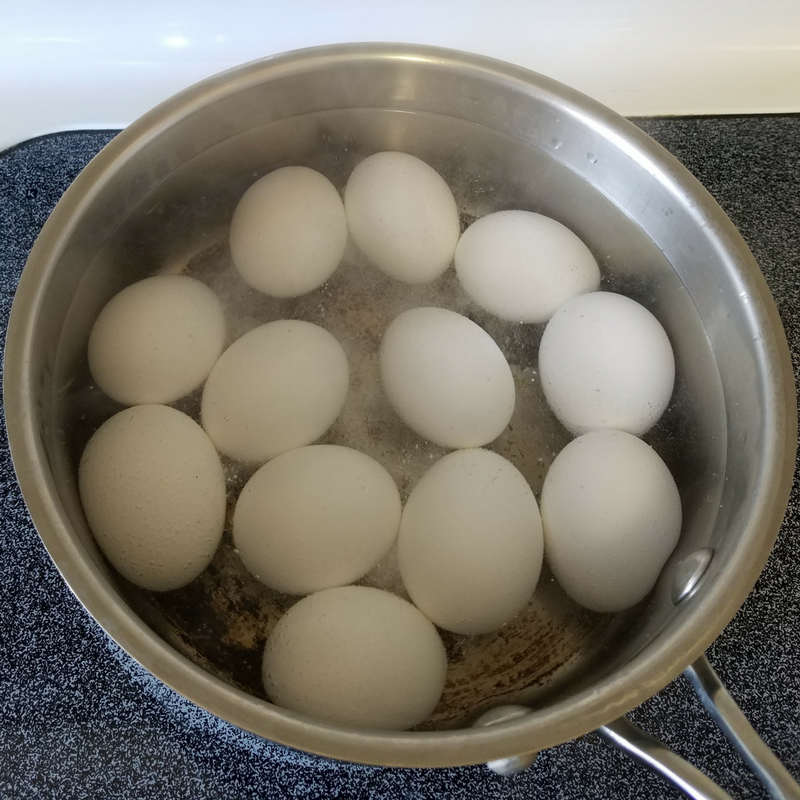
- Put the eggs in a pan. Fill the pan with water to a level an inch above the eggs.
- Put a cover on the pan and heat the eggs to a boil.
- Take the eggs off the heat and let them sit in the water for seven minutes. Note: Seven minutes cooks the yolk all the way through. If you like soft-boiled eggs, then take them out of the hot water a few minutes earlier.
What You Need:
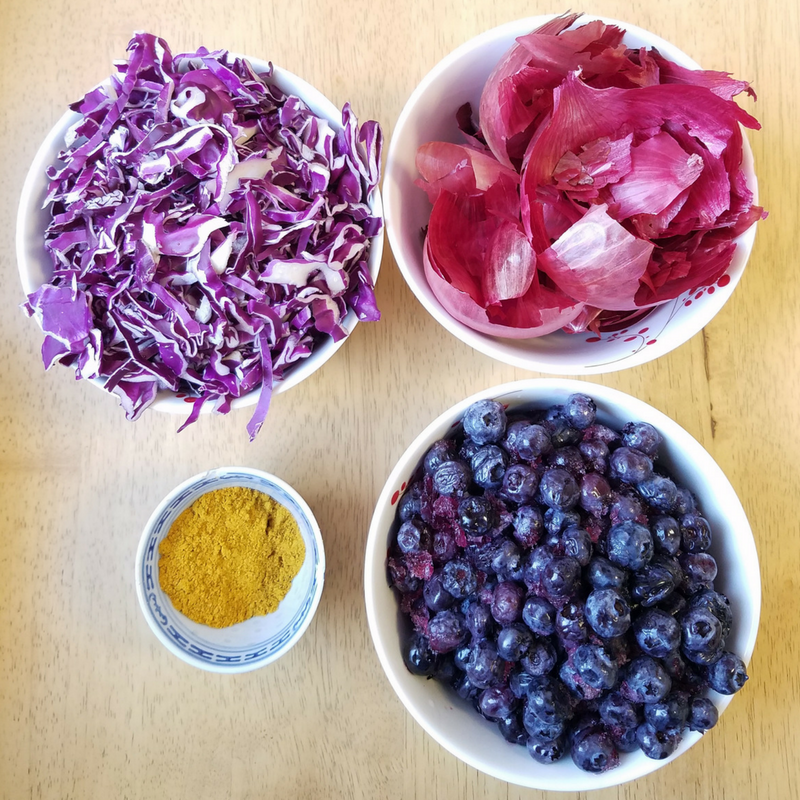
- Plant Material for Dye
- 2 cups Red Cabbage, shredded
- 2 cups Blueberries, whole
- 2 tablespoons Turmeric
- 4 Red Onion Skins, crumbled
- 2 cups Water
- 1 tablespoon Vinegar
- 2 or 3 Hard-boiled Eggs
- Gloves
Directions
Step 1
Put the plant material of your choice in a pan, and then add water and vinegar. Bring to a boil. Turn the heat down and simmer the ingredients for 30 minutes.
Step 2
Strain the dye (unless it’s a fine powder like turmeric), then pour the dye into a glass canning jar. Allow the dyebath to cool. I sped up the process by adding a few ice cubes.
Step 3
Now is the time to prep your eggs to create a design, if desired.
- Dinosaur Eggs – Tap the eggs with a spoon to crack them. This lets some dye in the cracks and creates a marbled effect.
- Striped Eggs – Wrap wide rubber bands around your eggs. The rubber bands will prevent the dye from reaching the egg surface, making a white stripe.
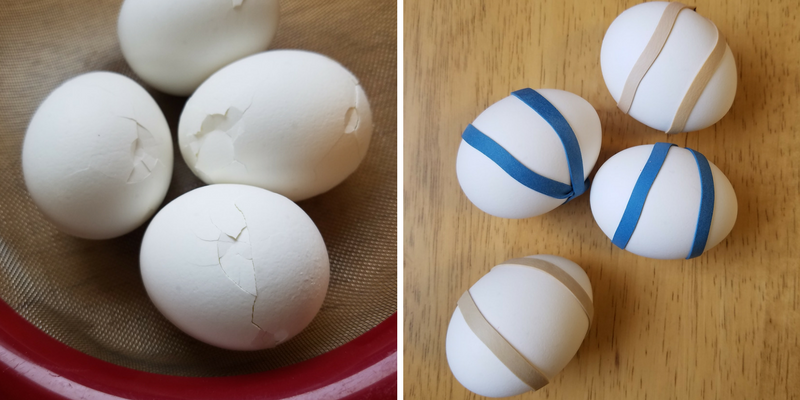
Step 4
Use tongs to lower your eggs into the canning jar. If the eggs are not fully submerged in the dyebath, then add a little water until the eggs are covered.
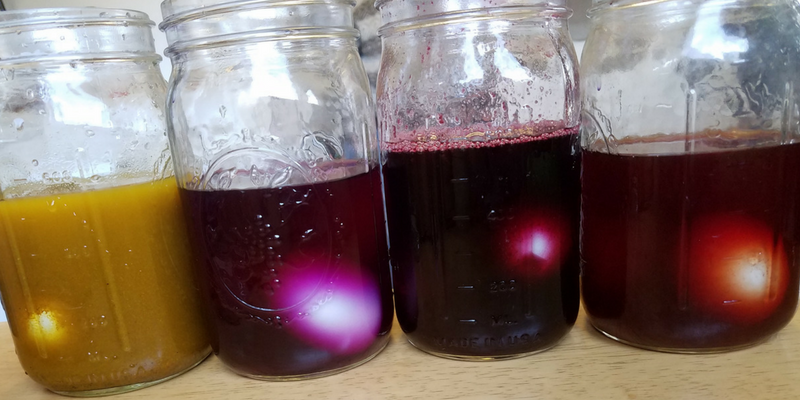
Step 5
Refrigerate the eggs in the dyebath for a few hours, or allow them to chill overnight for a more saturated color.
Step 6
Use tongs to remove the eggs from the jar, and rinse them under clean water. Serve and enjoy!
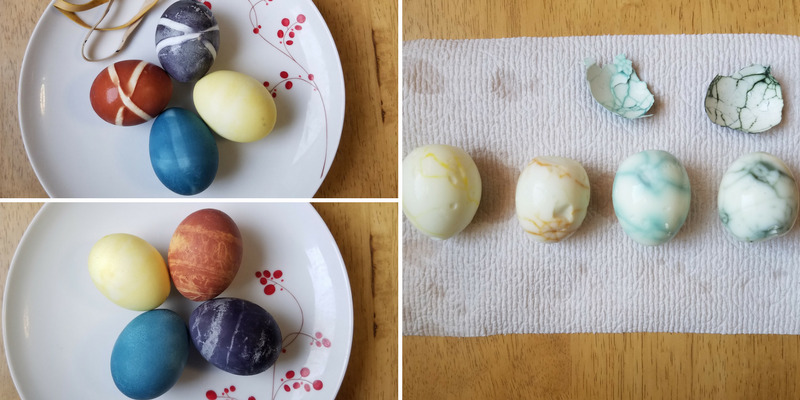
Explanation
Adding vinegar to your dyebath creates deeper colors. The vinegar lowers the pH of the mixture and dissolves some of the eggshell. The dissolved eggshell is rougher and has more surface area for the color to be absorbed.
Other plant-based materials you can use include: coffee, tea, hibiscus elixir, beets, and spinach.
What plant dyes have you used to color eggs? How did you create a pattern on your eggs? Did your eggs taste like the plant material you used to make the dye? Share in the comments below!

